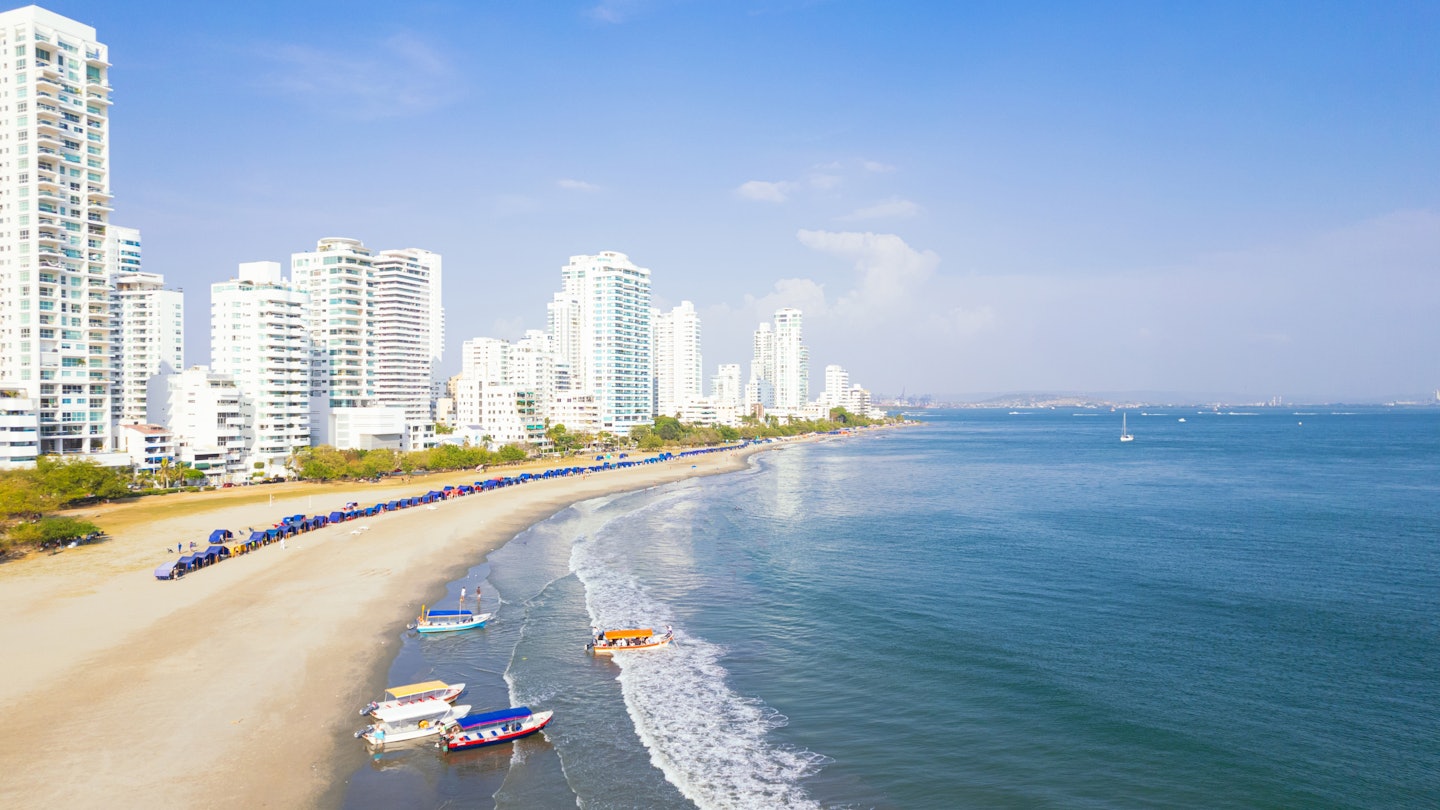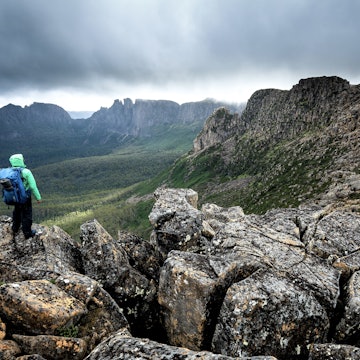

With a little planning, you'll have great weather for your Colombia adventure. FJ Jimenez/Getty Images
Colombia's equatorial position means temperatures fluctuate by altitude, not the time of year, so with the country's diversity of landscapes, almost any time can be a good time to visit.
These changes in altitude also mean Colombia has many microclimates and brief dry and wet seasons to factor in, although most places experience little temperature variation between seasons. Once you know where you’d like to go in Colombia, spend some time researching the weather in the area.
Here’s our guide to the best time to visit Colombia and experience the best the country has to offer.

December to February is ideal for hiking Colombia's national parks
December to February is a fantastic time to travel through Colombia, because it’s dry everywhere except the Amazon. In the Andes, expect sunny skies and warmish days – perfect for hiking in the country’s clutch of outstanding national parks, while the Caribbean coast is at its most gorgeous – and busiest. It's a popular time to visit (including for domestic travelers), so prices are at their highest throughout the entire country. Advance bookings for hotels and flights are essential, particularly along the northern coast.
January is the perfect month for hiking in Colombia, with trail conditions typically dry and the sky clear, ensuring excellent views from the top of many of the country’s lofty peaks. If you dislike crowds, head to Bogotá, which is deserted thanks to residents hitting the coast for their vacations, or go to a secluded eco-lodge along the Pacific coast.
The end of January is also ideal for exploring the Caribbean coast as the holiday crowds dissipate, but the festivals and parties carry on. Low humidity levels and warm temperatures make sunbathing and swimming an appealing prospect. Cartagena and Santa Marta are extremely busy in the first few weeks of January. Surfers will enjoy the big swells that bring waves to the beaches close to Barranquilla, Santa Marta, Cartagena, and Parque Nacional Natural Tayrona.

March to September, the shoulder season, is the best time for whale watching and adventure sports
Check the weather carefully before booking a trip between March and September, because the temperature and rainfall have massive regional variations. Bogotá, Medellín, and Cali suffer a secondary rainy season in April and May, while Cartagena shines through April, with hard rains beginning in May.
July through August is another short dry season, although you can expect brief tropical showers in highland cities. For animal lovers, the best time for whale watching on the Pacific coast is July to October. Festivals around Easter are also a spectacle worth seeing.
Colombia’s Caribbean islands, San Andrés and Providencia, remain dry until May, so shoulder season is an opportunity to explore their glorious beaches and remarkable coral reefs.
Semana Santa (Easter) is big in Colombia. Whether it falls in March or April, the country is seriously tuned in, with celebrations taking place in all of the main cities. However, crowds flock to those held in the handsome, colonial-era town of Popayán, where thousands spill out onto the cobbled streets and plazas to join solemn religious processions and costumed parades that have taken place every year since 1566. Mompox, Pamplona, and Tunja also hold colorful celebrations for Holy Week.
High water levels in March and into April mean the white-water rafting in adventure capital San Gil is at its most thrilling, and conditions are typically good for other adrenaline-fueled activities, including paragliding and caving.

Visit in October to November for cheap deals and wildlife-spotting in the Amazon
Across the country, prices are at their lowest, and it’s a wonderful time to visit the Amazon, where low water levels mean excellent hiking and wildlife spotting, white-sand beaches and fewer mosquitoes. Elsewhere, however, flash floods often wash out roads in the Andean region, and Medellín, Cartagena, and the Caribbean coast are disproportionately wet in October.
October and November are Colombia's rainiest months, and Bogotá, Cali, Medellín, and Cartagena are all at the mercy of the weather, with rainfall mostly hitting in the afternoon, so get out early to avoid the downpours.
Parque Nacional Natural Tayrona uses this period of peace and quiet to close, listing those dates on its website. So if you want pristine nature, head instead to the Amazonas Department to the peaceful town of Puerto Nariño or busier Leticia for a thrilling jungle tour, where water levels remain low and wildlife-spotting chances high.
Although November is wet, wet, wet throughout Colombia, head for the much warmer Caribbean coast. The attractions here are the parties, parades, and other festivities that abound in Cartagena on the 11th of the month, when it celebrates the day it declared independence from Spain. Expect to get deals on hotel prices and airfares in November too.
















